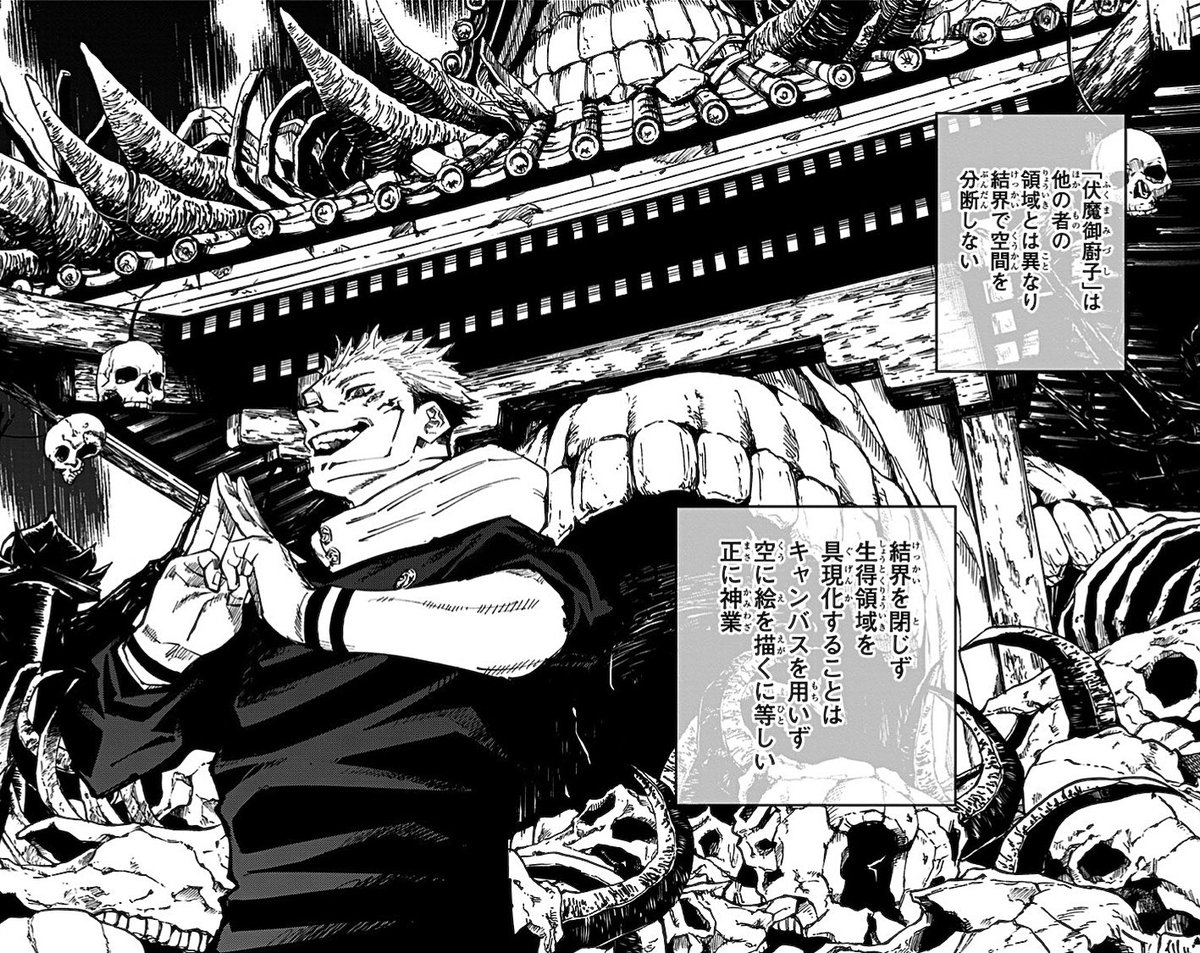Today I'd like to discuss why Tokyo Colony No. 2 is the most entertaining of entertainments. A battle which, contrary to other CG arcs, is not an exploration of the focus character but a pure application of his way of life
Tokyo 2 is a reflection of Kinji Hakari's philosophy,


Tokyo 2 is a reflection of Kinji Hakari's philosophy,


his passion given practical form: a life-or-death battle turned into straight-up gambling. And Hajime Kashimo, who is about calculated moves, was the perfect opponent to throw shade to guaranteed odds
Gege Akutami crafts one of the greatest battles that invigorates the "fever"


Gege Akutami crafts one of the greatest battles that invigorates the "fever"


into the readers & turns each of us into a spectator of the Tokyo 2 "fight club." If you read it weekly, you'd know all TOO WELL what I'm talking about
Just recall the intensely heated but passionate fan discussion revolving around Hakari vs. Kashimo
Just recall the intensely heated but passionate fan discussion revolving around Hakari vs. Kashimo

Tokyo 2 starts with warm-ups for the two main players: Charles Bernard & Panda. However, each battle might as well have been scripted bc it was obvious from the start who was gonna win. There was no fever
Instead, they were used to introduce the main players' primary strengths


Instead, they were used to introduce the main players' primary strengths


• For Hakari, his Domain Expansion but most importantly his "Luck" as a skill
• For Kashimo, his refined Taijutsu & his "sure-hit" lightning
What followed next was one of the most unpredictable, most incredibly RAW battles among JJK; one argued as widely as Gojo vs. Sukuna


• For Kashimo, his refined Taijutsu & his "sure-hit" lightning
What followed next was one of the most unpredictable, most incredibly RAW battles among JJK; one argued as widely as Gojo vs. Sukuna


A contest of 2 fighters who couldn't be more similar yet couldn't be more diff
A fighter with decades of experience in battle, with skills rooted in tangible processes... against a fighter who constantly gambled his life with almost no hesitation, go big or go home mentality



A fighter with decades of experience in battle, with skills rooted in tangible processes... against a fighter who constantly gambled his life with almost no hesitation, go big or go home mentality



Hakari plays the long game & excels in a battle of attrition. A complicated DE granting him an undying body, making him one of the most defensive sorcerers
In contrast, Kashimo's only strategy is purely offensive. He focuses on using his powerful physicality & nature rather
In contrast, Kashimo's only strategy is purely offensive. He focuses on using his powerful physicality & nature rather
than faith. His CE manipulation is among the top & his primary attack is extremely lethal, making him a fiercely offensive sorcerer, the opposite of Hakari
How ironically similar to each other: powerful one-trick ponies with special CE traits. Yet one prefers to finish the fight
How ironically similar to each other: powerful one-trick ponies with special CE traits. Yet one prefers to finish the fight
quickly, while the other wants to drag it out. One's trick is consistent, while the other relies on his Great Luck
Hakari constantly defied death while Kashimo had to find a way around it. High stakes, cliffhangers that left readers constantly at the edge of their seats without


Hakari constantly defied death while Kashimo had to find a way around it. High stakes, cliffhangers that left readers constantly at the edge of their seats without


guarantee of anything
Gege respected both fighters so much that even the end result was a "win" for both sides. Kashimo acknowledges his defeat, while Hakari does not acknowledge his superiority
A conclusion that once again represents Hakari's philosophy, the give-and-take


Gege respected both fighters so much that even the end result was a "win" for both sides. Kashimo acknowledges his defeat, while Hakari does not acknowledge his superiority
A conclusion that once again represents Hakari's philosophy, the give-and-take


If I had to be honest, Tokyo No. 2 is like a Domain itself; immersing the readers into Hakari's vision, his place to belong (居場所) in the Jujutsu world. To make entertainment, to thrive in the fever
It was also the most pure, unadulterated fun we have had for a while
It was also the most pure, unadulterated fun we have had for a while
• • •
Missing some Tweet in this thread? You can try to
force a refresh

 Read on Twitter
Read on Twitter






















